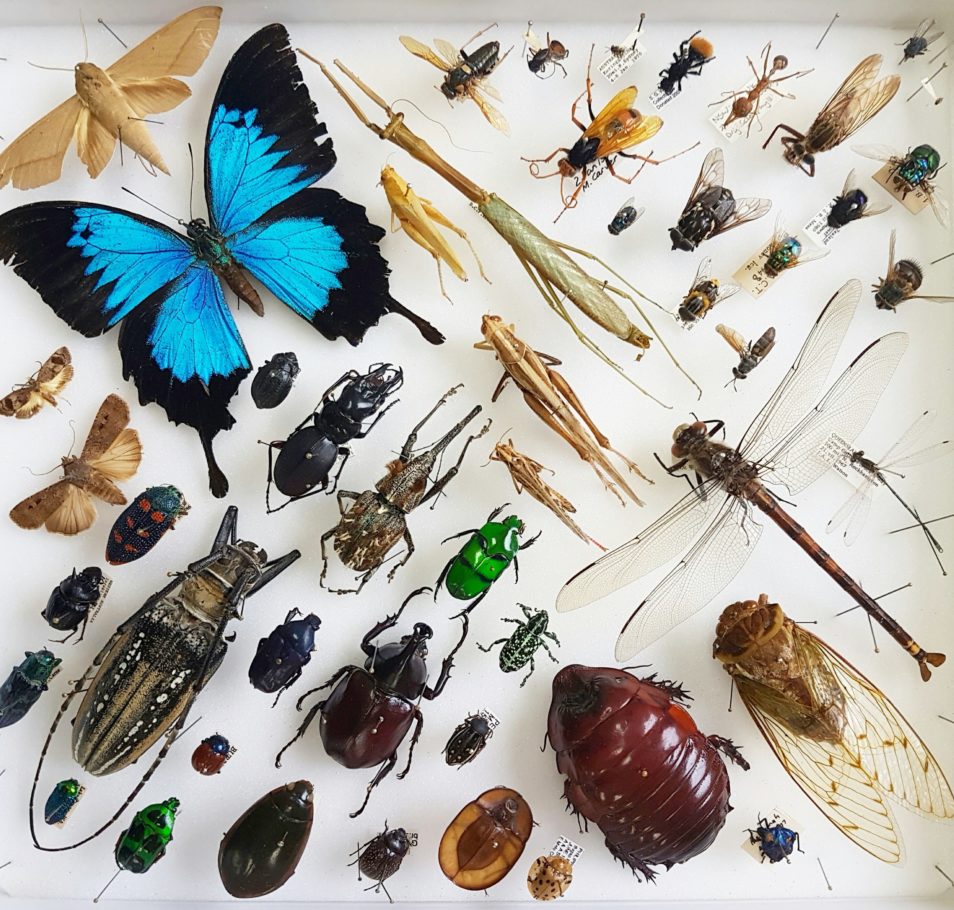
The impacts of bushfires on insects are almost as diverse as insects themselves.
The impacts of bushfires on insects are less visible than the impacts on animals like koalas. Many of Australia’s insects are not well studied or don’t have scientific names. This means we cannot know the full extent of the bushfire impacts on insects.
Escaping and repopulating
Some insect species can fly away from slow moving fire fronts, if they are at the adult, winged stage of their life cycle. Insects such as immature cicadas and Christmas beetles can survive fires buried beneath the ground. However, their adult winged stages occur in summer, which means they can only survive by flying away from the fire.
Other species can repopulate burnt areas from unburnt areas after the vegetation recovers. The current Australian bushfires fires are so extensive that this may slow the recovery process.
Insects at risk
Bushfires have more devastating impacts on immobile or slow-moving insects. Many insects attach themselves to leaves and will be burnt by fires.
Other insects at risk are those adapted to and dependent upon local vegetation in fire impacted areas.
It is likely that some species, such as beetles with small distributions, have been severely affected by this season’s bushfires because their entire range has been burnt. The Australian bushfires may have caused extinctions of some insect species. It can take many years to confirm that a species no longer exists, meaning extinctions are not likely to be declared in the near future.
Intricate impacts
Ash that falls into creeks and rivers alters their ecology and will have a negative effect on aquatic insects such as immature mayflies, stoneflies and caddisflies. These habitats often rely on dense vegetative cover to maintain humidity and appropriate levels of light. The loss of vegetation in bushfires also alters stream ecology. It does this by reducing humidity and increasing light levels.
Habitat destruction by bushfires can have flow-on effects due to the interconnectedness of living things. For example, after fires the rapid growth of introduced African grasses in woodlands, wetlands and rainforests can prevent native seedlings becoming established. This reduces habitat and food for native insects and other small animals. It also prevents oecophorid moths re-establishing. Oecophorid moths break down leaf litter from eucalypts and wattles, helping to recycle nutrients back into the soil and reduce fuel loads. (In moist forests of the northern hemisphere this role is performed by other invertebrates and fungi.)
Hidden benefits
Some insects benefit from fires. A major role that they play is in the decomposition of organic matter including carcasses. Any flies and beetles that perform such roles may obtain a short-term benefit in the aftermath of bushfires. The same is true for beetles that feed on decaying logs and tree trunks.


21st February 2020 at 12:02 pm
Many insects including some iconic butterflies have larvae thet depend on mistletoes. However most mistletoes are killed by fire and have no means of regenerating within burnt areas except through the importation of fresh seed from un-burnt areas. This is a slow process and, given the scale of recent fires, the prognosis for mistletoes and their dependent faunas is grim.
13th January 2020 at 9:23 pm
My brother noticed that in Tabulum where there were fires in feb sep and oct the dung beetles are not doing their job – cow shit and flies everywhere – I read where they can repopulate after bushfires but am not sure they can do it quick enough without help and before we end up with public health implications . Not sure we have ever had fire over the same ground 3 times in a year nor so widespread
12th January 2020 at 7:58 pm
Thanks for this very informative and interesting article. Insects are so underrated.
9th January 2020 at 6:12 pm
Over the past five years especially, I have noticed a dramatic decline in insects in my organic backyard despite the yard being greener with more flowers and more fruit and vegetables growing. I think the scientists fears are a reality.